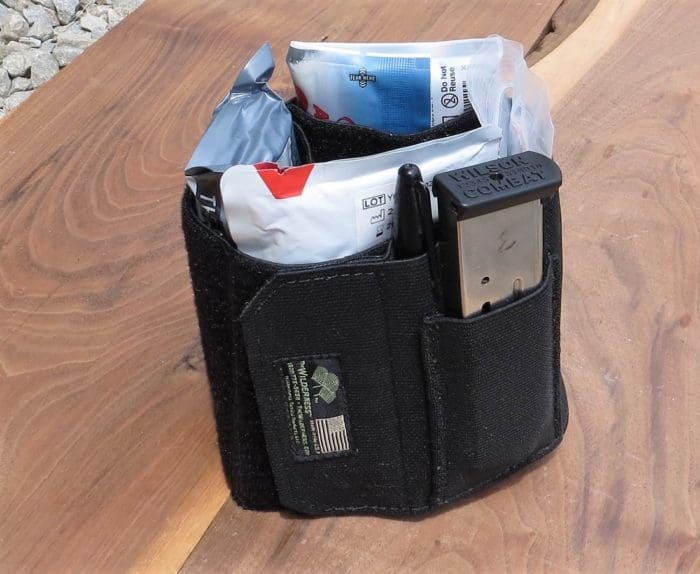By Ryan Cleckner
The goal of a gunfight is not to kill or disable the other person(s), it’s to stop the attack and keep yourself (and anyone else you choose) alive if needed, go back and read that again.
Yes, in order to keep yourself alive and (hopefully) uninjured, you may need to kill or disable an attacker. However, the killing or disabling of the “bad guy(s)” is a means to an end – it’s one method to achieve the ultimate goal of keeping yourself (and anyone else you choose) alive and unharmed. Another method might be running away to safety.
This is an important distinction.
First, it emphasizes the point of self defense; you aren’t trying to kill or disable anyone. You’re trying to defend yourself and others. Second, I believe that too many people train for a gunfight by focusing only on offense and not enough about defense.
If I haven’t lost you already…hear me out.
You will have survived and/or won a gunfight not by killing or disabling the “bad guy(s)” but, rather by being alive. Killing the “bad guy” is irrelevant to the outcome. For example, you may have killed the “bad guy(s)” and still not have won the gunfight if you end up dead as well.
Yes, it’s vitally important to train with a firearm. You must know how to use it and use it effectively to defend yourself and others. You should also be training to get to/fire from as safe a position as possible.
If you were preparing for a football game, would you only focus on offense by only practicing how to score touchdowns? No, you’d practice defense too. You should start thinking about your training the same way.
I encourage you to seek out defensive training. How to defend against a “bad guy” (by running, barricading, etc.). How to prevent the “bad guy” from getting into good position while you’re in a bad one (situational awareness, making good choices, etc.).
But primarily, you should be training to keep yourself and others alive. Putting five bullet holes into a bad guy and killing him is likely little consolation if you’re lying there with four bullet holes in your body and bleeding out. Which brings us to first aid.
If you have a quality firearm and ammunition with which you regularly train, that’s great. If you carry it regularly, even better.
Now, do you have first aid supplies or training? Do you own a tourniquet? Gauze? A chest seal?

In a situation like the horrific Las Vegas shooting, the vast majority of the injured people didn’t have a firearm. They were listening to music in a designated gun-free zone. Therefore no amount of firearms training or tactical skill would’ve helped. However, a small emergency medical kit and the knowledge how to use it would’ve been priceless.
Even without a kit, some knowledge would have helped. Even a granola bar wrapper makes a fine field-expedient chest seal. A belt can be used as a makeshift tourniquet. In the military, we kept giant safety pins handy. In the absence of a proper airway device, I’d have no complaint if someone safety-pinned my tongue to the side of my cheek to keep me breathing and alive.
Of course, I’m stepping way outside of the bounds of “approved” medical treatment here. However, during a mass casualty situation like the Las Vegas shooting, I couldn’t care less what’s “approved.”
I spent my time in the military was with 1st Ranger Battalion/75th Ranger Regiment. When I was in, great effort was made to have an EMT in every functional group. I was a sniper team leader (group of two) and therefore, my unit paid for me to attend civilian training for and become certified as a nationally registered EMT-I.
During our training, we were constantly reminded what we were allowed to do when we were working in an ambulance or the emergency room of the local hospital vs. what we could do on a battlefield where lawyers aren’t a consideration.

Unfortunately, we need to treat some situations such as what happened in Las Vegas like a battlefield when it comes to saving lives (see safety pin comment above). The only consideration then is to mitigate the damage done with anything and everything at hand.
When some gun owners are asked about home defense with a firearm they turn the tables an ask the questioner if they have a fire extinguisher or a burglar alarm. I’d like to piggyback on that: the next time someone tells me about the firearm they have or the training they’ve completed, I’m going to ask them about the first aid (defensive) training they’ve completed or what tourniquet/chest seal they have with them.
I hope this gives you something to consider. Practicing for offense is great. However, you win/survive a gunfight by staying alive, not necessarily by killing the bad guy.
Ryan Cleckner was a special operations sniper team leader in the US Army’s 1st Ranger Bn (75th) with multiple combat deployments and a sniper instructor. He has a series of basic online instructional videos, he’s the best selling author of the Long Range Shooting Handbook, and he’s a firearms industry executive and attorney at RocketFFL.com where he helps folks get an FFL and RocketCCW.com where he qualifies folks for a CCW in over half the country all online.
